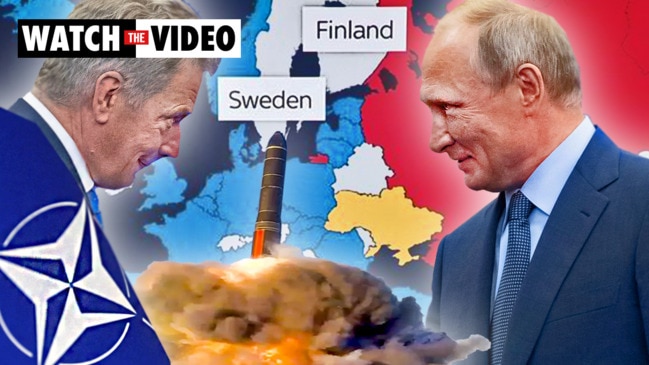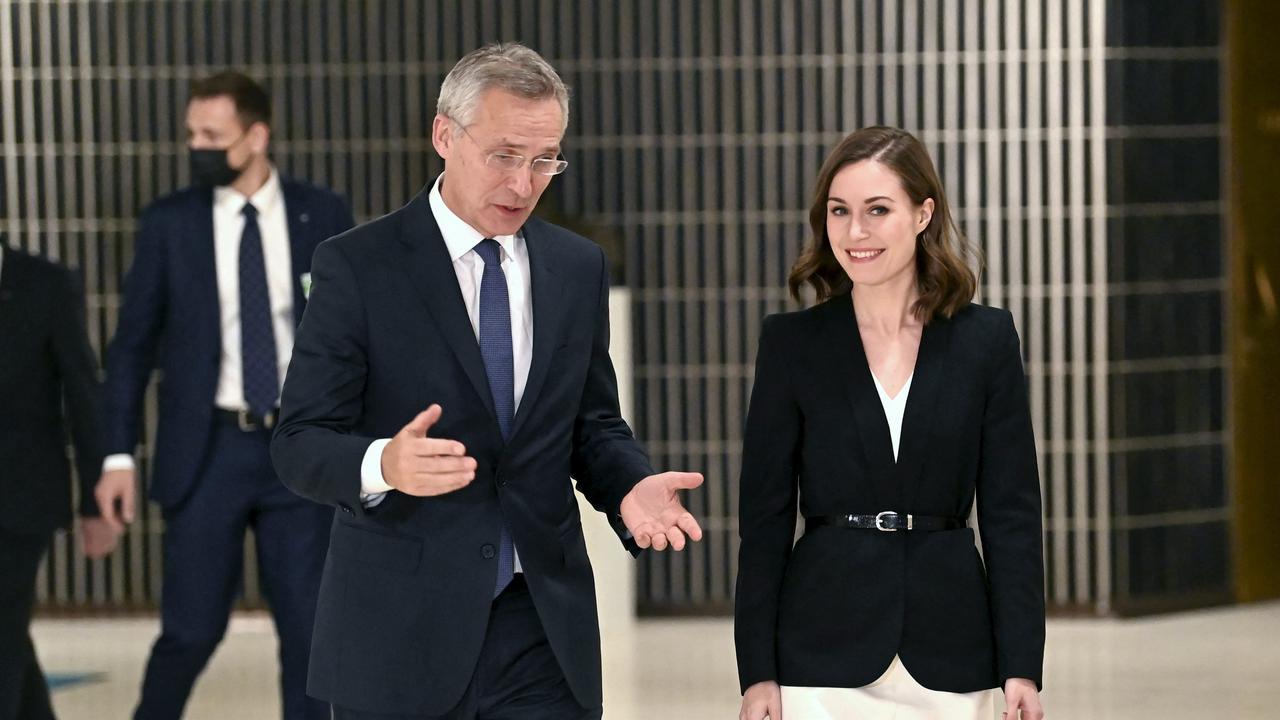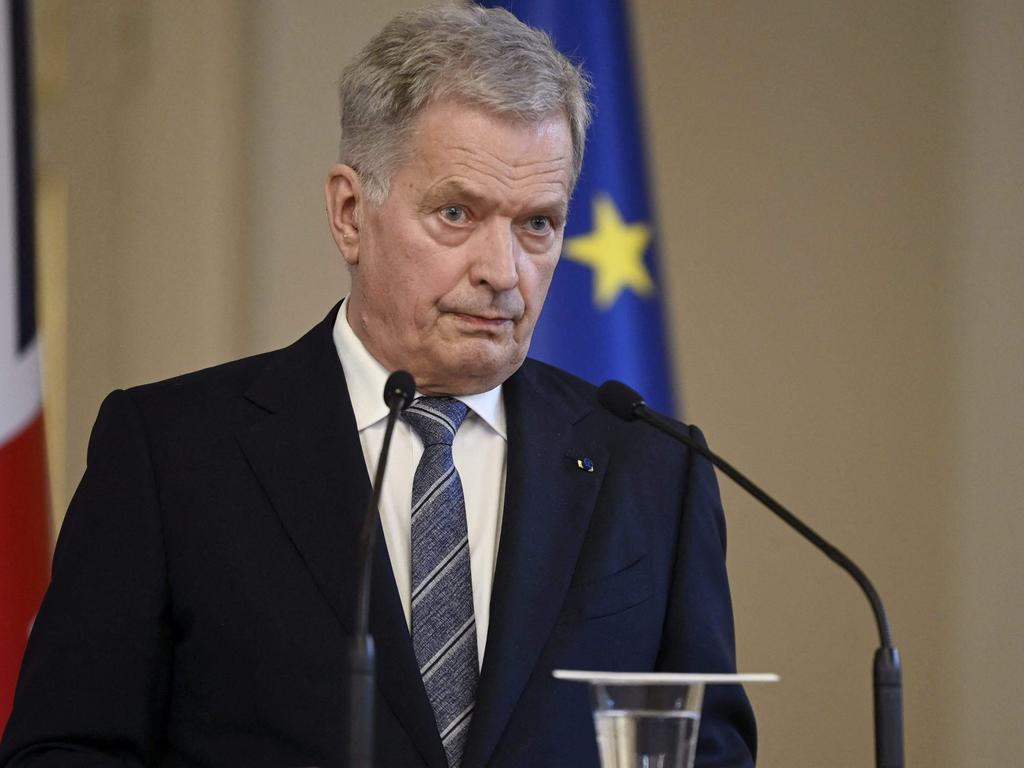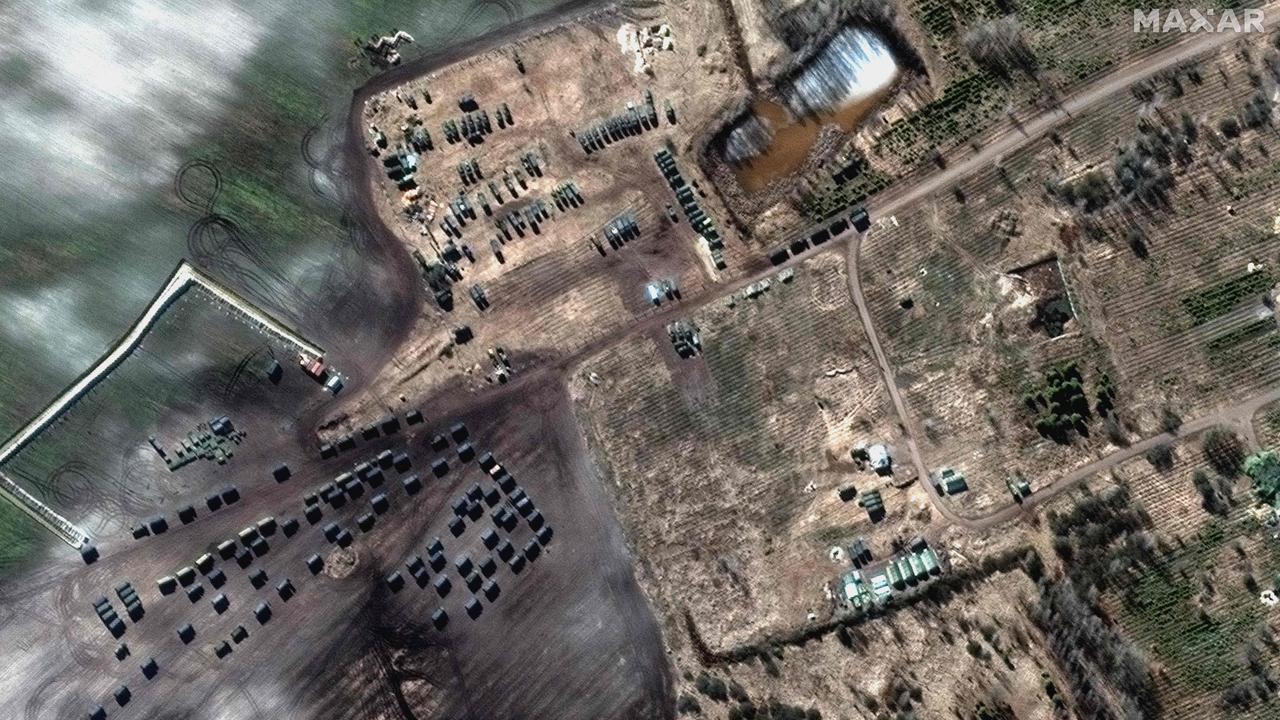Finland’s push to join NATO shows how fast Russian relations have soured
They were once so close their President played hockey with President Vladimir Putin, now this country has taken action to combat Russia.

Its isolation compelled it to remain neutral during the Cold War. And it saw no reason to change after the fall of the Soviet Union. Now neutral Finland’s prime minister says: “Russia was not the neighbour we thought it was.”
For decades, few nations have been more welcoming toward post-Soviet Russia.
Finland saw an opportunity to turn a once bitter enemy into a friend.
After all, it shares a 1300km border with Moscow.
Finland’s President Sauli Niinisto is an example of this effort. He’s long acted as a diplomatic bridge between Europe and Russia. He’s even played hockey with Putin in an expression of their close ties.
But this optimism hasn’t lasted.
Joint statement by the President of the Republic and Prime Minister of Finland on Finland's NATO membershiphttps://t.co/IWJQg6Hj69pic.twitter.com/0LV3FVyNdw
— TPKanslia (@TPKanslia) May 12, 2022
Finland was alert to Moscow’s hostility towards many of its European neighbours.
Then it was subjected to Moscow’s intimidation itself. But it took until now for the Finnish public to become alarmed.
“The psychology has changed since the attack on Georgia and the occupation of Crimea,” says Finland’s foreign minister Pekka Haavisto. “Russia is our neighbour, and we see Russia behaving in an aggressive way in our neighbourhood against other countries.”
News of Finland’s potential bid to join NATO has rattled the Kremlin. It’s precisely the opposite reaction to the Ukraine invasion it expected.
Now it’s been observed moving extra military units toward the Finnish border.
And one of its attack helicopters flew 5km into Finnish airspace on Thursday – a month after a similar incursion by a military transport aircraft.
“If Finland makes this historical step, it is for the security of our own citizens,” says Finnish Prime Minister Sanna Marin. “Joining NATO will strengthen the whole international community that stands for common values.”

Alarm bells
Just a year ago, Finnish government policies encouraged economic co-operation with Russia. Public opinion was firmly against antagonising its nervous neighbour – with only 28 per cent of the population wanting to join the NATO alliance.
And that’s despite being menaced by Russian combat aircraft and warships since the 2014 annexation of Crimea.
Then, on March 4, one week after the invasion of Ukraine, Finland changed its mind.
Polls showed 48 per cent wanting full NATO membership. About 70 per cent wanted some affiliation. Only 20 per cent totally opposed the idea.

“Russia’s capability to mobilise more than 100,000 troops in one spot, without fully mobilising its army – I find this remarkable,” says Foreign Minister Haavisto.
He was referring to how President Putin attempted to conceal his intention to invade Ukraine. After large-scale “war games “a year earlier, the Russian army simply left its equipment and stockpiles in Belarus.
All war needed was for the troops to return – and for Putin to justify an attack over “security concerns”.

But Mr Haavisto also expressed alarm at Putin’s nuclear and chemical warfare bluster.
“This is a totally new situation in Europe when this sort of rhetoric about unconventional weapons is employed,” he said.
Finland’s neutral history has not left it unprepared.
Its army is one of the strongest in Europe. Its population is subject to military conscription. It maintains an active reserve of 280,000 soldiers. And it has ensured its military equipment is up-to-date.
Like Ukraine, it can likely put up a very intense fight.
“Our weakness is chemical weapons, nuclear weapons, nuclear threats; it is very difficult to address these kinds of threats, which are now on the table, by ourselves,” Mr Haavisto told Foreign Policy.
Bitter history
Finland’s history has an eerie similarity with what’s happening in Ukraine today.
After a century as part of the Russian Empire, it won independence in 1917.
Then, in 1939, Chairman Joseph Stalin sought to seize the Arctic-European state once again. His stated reason: “security concerns”.
Finland, though massively outnumbered, successfully resisted a bungled Russian invasion. But it couldn’t sustain the effort. So, in March 1940, Helsinki signed a peace agreement ceding about 9 per cent of its territory to Moscow.
Barely a year later, Finland allied itself with Nazi Germany in an assault on Soviet Russia. It fought to regain lost territory – and seize some of Russia’s own.
Helsinki was ordered to pay war reparations to Moscow after World War II.
Isolated from both East and West, it pragmatically chose to go it alone during the Cold War. And it did all it could to avoid antagonising its prickly neighbour.
But times have changed.

“To be sure, ever since the fall of the Soviet Union and the end of Helsinki’s “special relationship” with Moscow, the Finns have been moving away from their traditional policy of neutrality,” argues historian Gordon Sander in the journal Foreign Policy. https://foreignpolicy.com/2022/05/07/finland-nato-foreign-minister-haavisto
Helsinki joined the European Union in 1995. But it remained “non-aligned” in matters of foreign policy.
But, after Russia’s aggression towards Chechnya in 1999, Georgia in 2008 and the first invasion of Ukraine in 2014, Finland saw the writing on the wall.
It joined Sweden in becoming “Partners for Peace” with NATO – essentially associate members of the European alliance.
Moscow has reacted by menacing unspecified “military and diplomatic consequences”.
Now Finland perceives the threat to be a clear and present danger.
And it wants NATO’s protection.
Jamie Seidel is a freelance writer | @JamieSeidel






